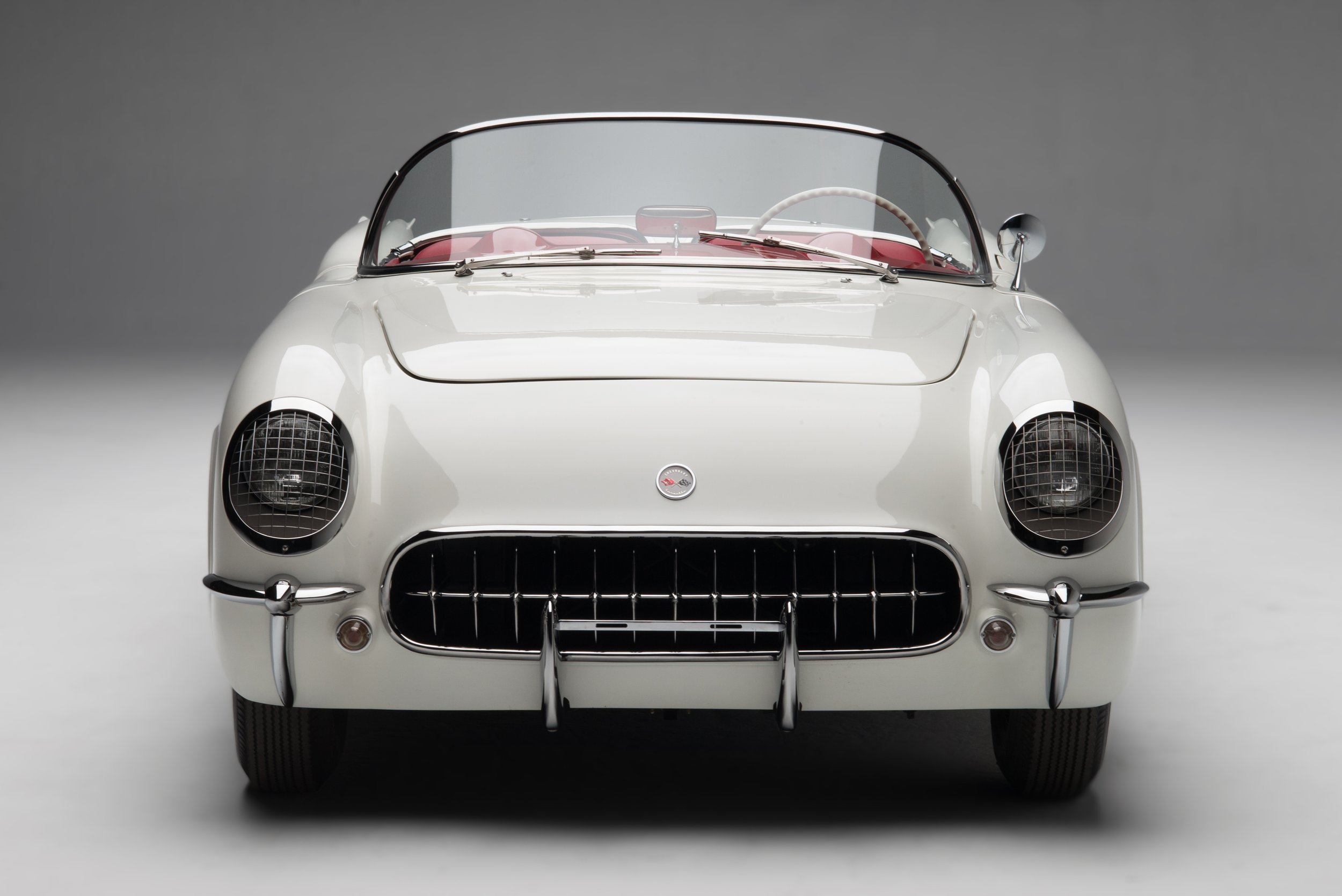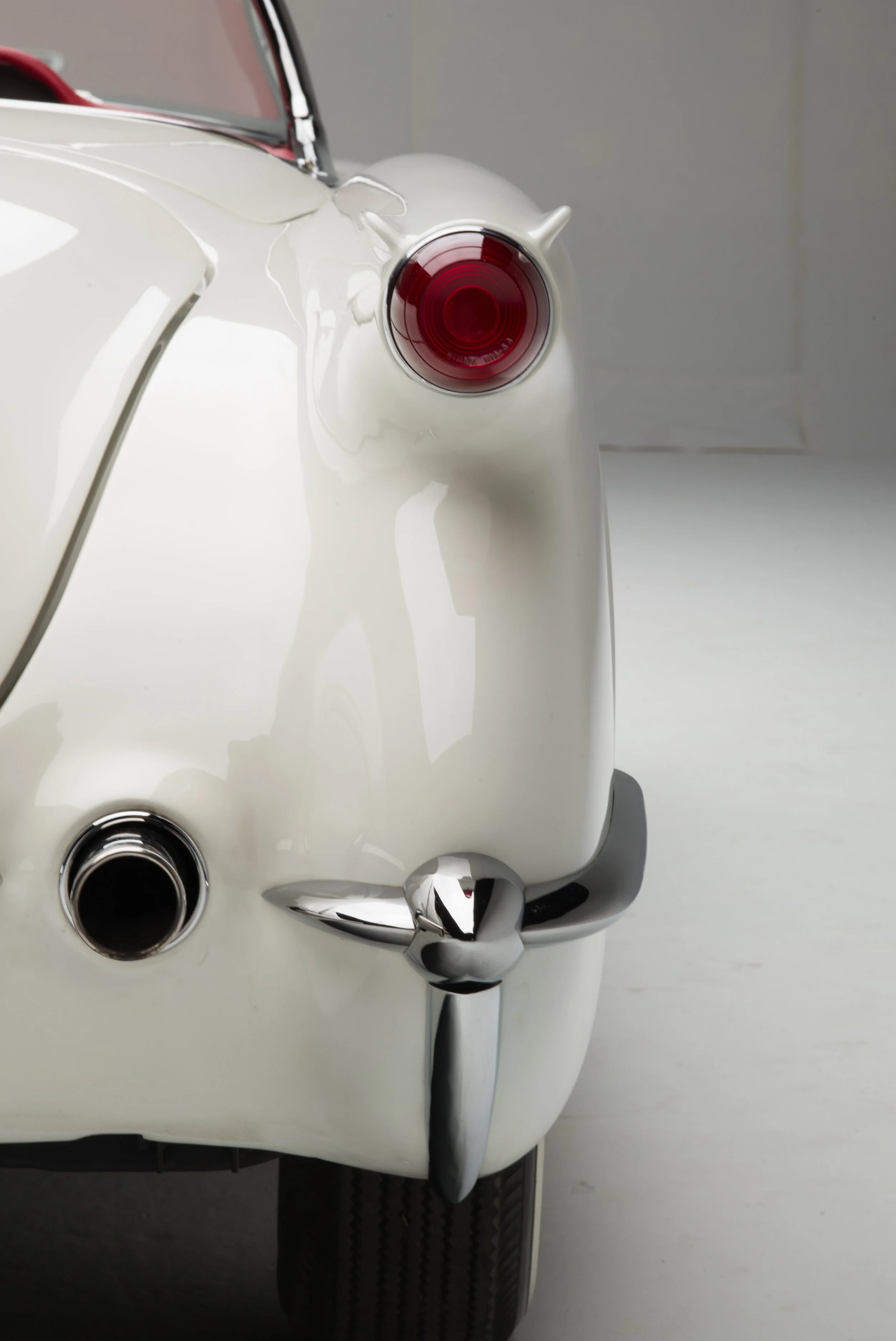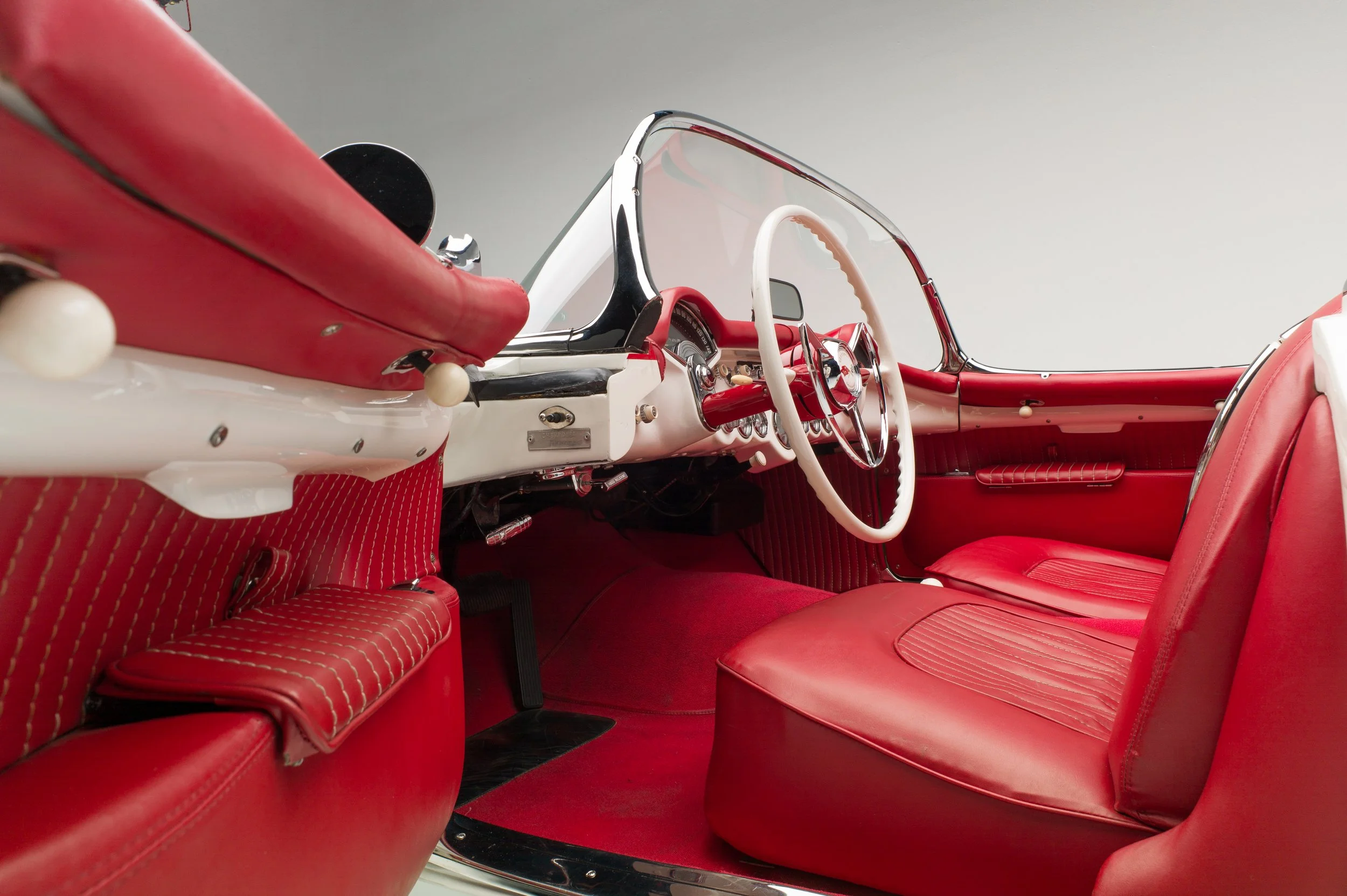1954 Chrevrolet Corvette Roadster










1954 Chrevrolet Corvette Roadster
When Chevrolet chief designer Harley Earl embarked on his quest to bring a low-priced, high-performance sports car to the American public, few could have foreseen the decades of success ahead for the Corvette. The car’s first years were full of bumps and bruises, but solid engineering and spectacular design soldiered on, eventually making the Corvette an icon of American motoring.
- YEAR & MAKE - 1954 Chevrolet
- MODEL NAME - Corvette
- SERIES - E2934
- MODEL/BODY/STYLE NUMBER - E2934
- BODY TYPE - 2 Door, 2 Passenger Roadster
- BODY BY - Fisher Body Corp
- # CYLS. - Strt. 6
- TRANSMISSION TYPE & NUMBER - Powerglide Automatic
- WEIGHT - 2,886 lbs
- ESTIMATED PRODUCTION - 3,640
- HP - 150
- C.I.D. - 235.5
- WHEELBASE - 102″
- PRICE NEW - $3,523
Chevrolet produced its initial batch of 300 Polo White Corvettes for 1953 in Flint, Michigan, but, banking on the warm media reception for the model, set about retooling a plant in St. Louis, Missouri, to handle production of 10,000 cars per year beginning in 1954. Because the company’s sights were set on production capacity, not design, most of the changes to the car for that year were evolutionary—engineers and designers noted problems with the 1953 model and rolled out a series of tweaks throughout 1954 to address the issues. Relocating the exhaust outlets slightly kept blowback from marring the paint, while gas and brake lines were repositioned for increased longevity. The choke switch was moved from the right to the left of the steering column to allow for easier operation; another ease-of-use upgrade involved using a single-handle hood latch. Early tricky, protruding convertible top main irons were changed to less conspicuous dogleg versions.
Aesthetically, the variations were a little more pronounced. Buyers could now choose between several colors: Polo White was still the most popular, but Sportsman Red and Black cars were now available, all with red interiors; and Pennant Blue with beige interior made its debut. All convertible tops were now beige, rather than black.
The tried and true Blue Flame Six under the hood left buyers in doubt about whether the Corvette was a boulevard cruiser or a true sports car, contributing to disappointing sales numbers. As a result, the 1954 Corvette tuned up the engine with triple carburetors and a new camshaft, creating the Corvette Special Six and boosting horsepower from 115 to a respectable 150.
For 1954, Chevrolet decreased the base price of the Corvette to $2,774—but with the inclusion of the “mandatory option” Powerglide two-speed automatic transmission at $178.35, this wasn’t as significant as it might have been. With all options, such as whitewall tires, directional signals, heater, and AM radio, a loaded Corvette went for $3,254.10—about the same as the year before.
By the end of 1954, 3,640 Corvettes had rolled off a production line which had been intended to produce more than three times as many of the little sports cars. And of those, more than 1,500 cars remained unsold on dealer lots, eventually going for steep discounts. Marketplace confusion between boulevard car and track-day performer had no doubt made potential buyers wary, as did the minimal changes to the car from its introductory form. Without a race-friendly manual transmission option and a clearly defined performance mandate, the Corvette was in danger of becoming merely a costly experiment by Chevrolet. Thankfully, intervention by engineer Zora Arkus-Duntov and a complete powertrain overhaul for the 1955 model year would lift the Corvette’s sales—and spirits—and firmly place it in the pantheon of American sports car greats.
